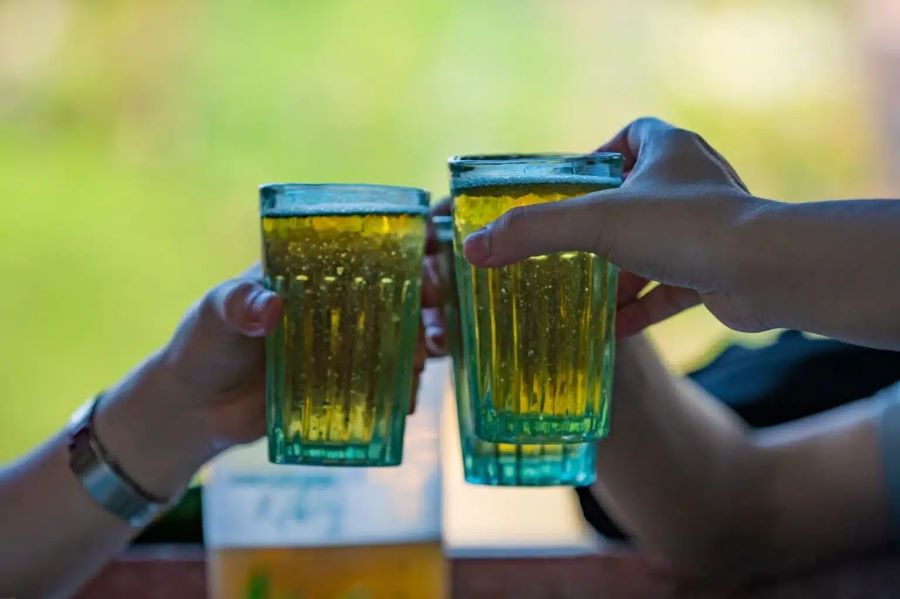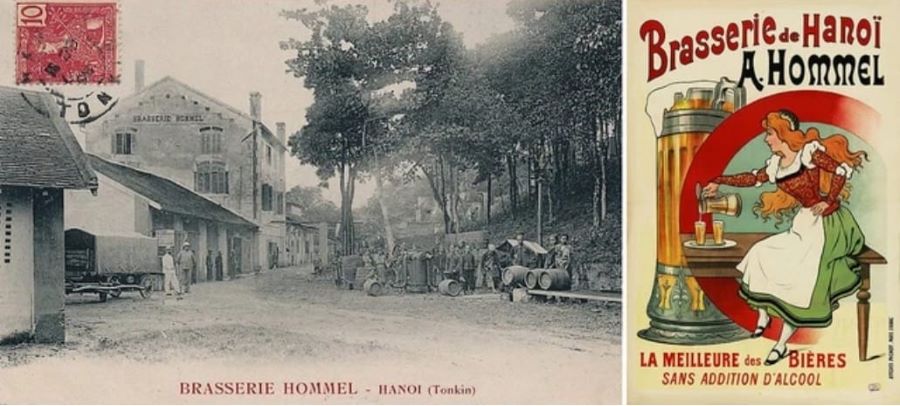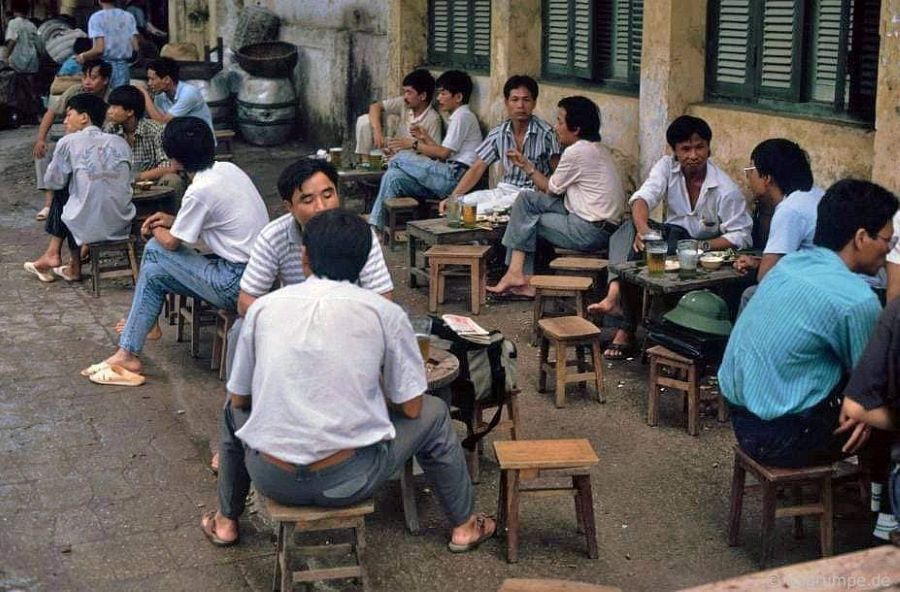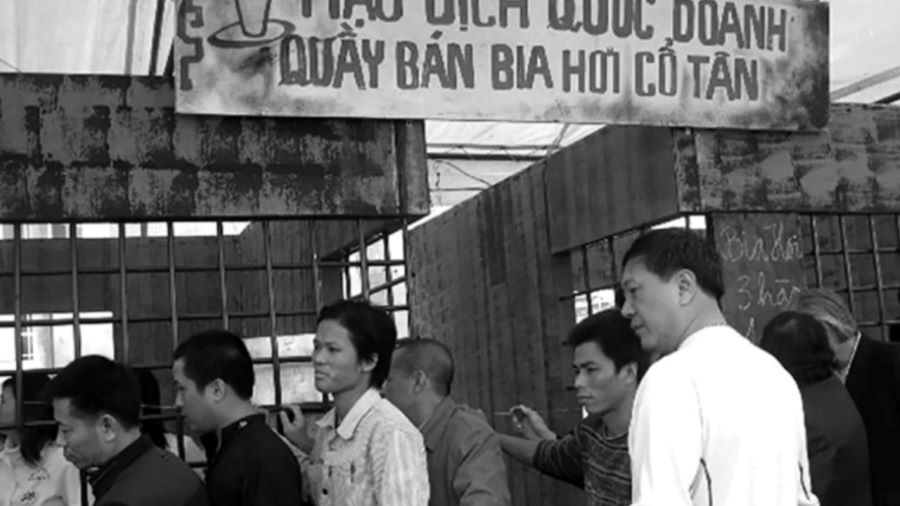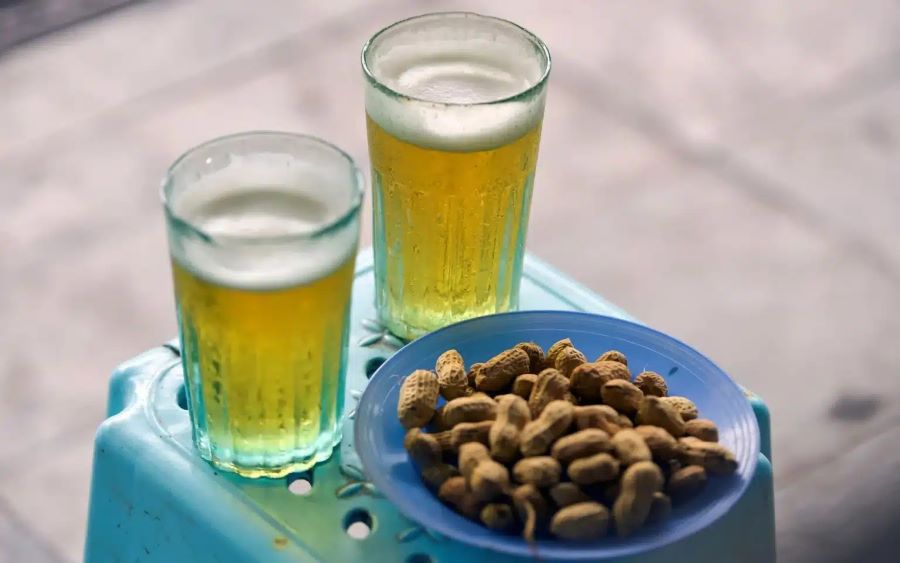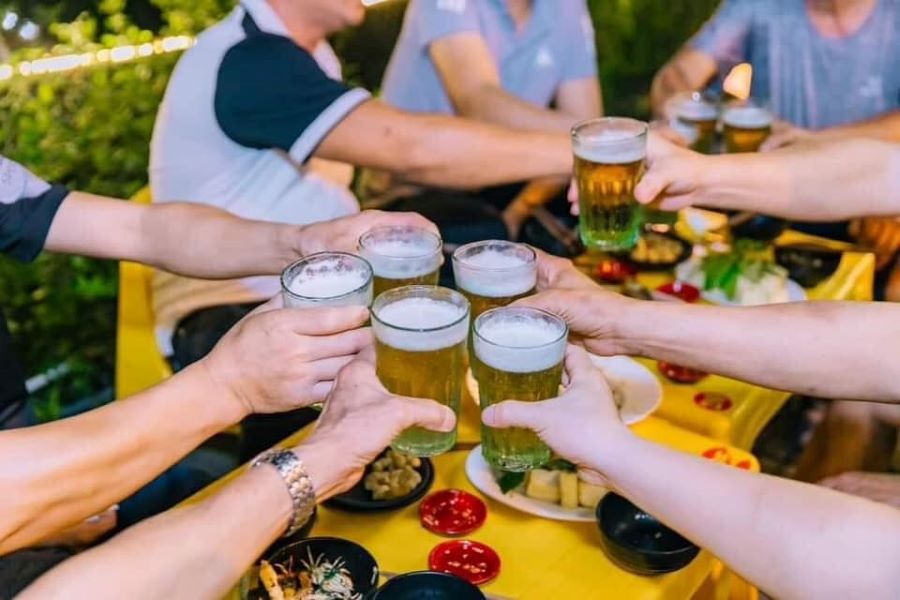For visitors to Hanoi, it may be surprising to see locals enjoying draught beer from plain, utilitarian glassware, especially with the wide variety of beer options available today, from craft brews to imports. However, this unassuming beverage and its unique drinking culture hold a special place in the heart of Hanoi and its people. Join us as we explore the origins and enduring appeal of Hanoi’s iconic draught beer with The Hanoi Times.
| Drinking bia hoi, Hanoi’s beloved draught beer, has been a longstanding tradition in the city. Photo: Tinhte |
The humble glass mugs that hold this golden beverage have been a fixture in Hanoi’s beer culture for almost half a century. While the city’s drinking scene has evolved, these mugs remain a nostalgic reminder of simpler times for seasoned drinkers who recall the subsidy era. They are an integral part of the authentic Hanoi draught beer experience.
A Historical Beverage: When Did Bia Hoi Hanoi Begin?
Bia hoi, or Hanoi draught beer, has a rich history dating back to the early 20th century during the French colonial period. In 1890, Hanoi’s first brewery was established by French merchant Alfred Hommel on Elephant Mountain, now the site of the Botanical Garden. With a modest daily production of 150 liters, the brewery supplied beer to French troops and civil servants stationed in Hanoi. The beer was bottled in glass and sealed with corks, a novelty at the time.
While the original brewery closed its doors in 1954, it was resurrected in 1958 with the expertise of Czech brewmasters. Since then, the Hanoi Brewery has been located at No. 183 Hoang Hoa Tham, a site synonymous with the city’s brewing heritage.
| The first-ever beer factory in Vietnam, founded by French merchant Alfred Hommel, laid the foundation for Hanoi’s brewing legacy. |
Bia hoi is typically brewed fresh daily and served in local establishments, from cozy bars to street-side stalls. It has become an iconic drink in Hanoi, beloved by locals and visitors alike, who appreciate its freshness and the unique cultural experience it offers.
The Bia Hoi Experience During the Subsidy Era
During the subsidy era, when the state controlled various sectors of the economy, including food and beverages, draught beer held a prominent place as the most popular soft drink. Each morning, a fleet of cyclos would gather outside the Hanoi Beer Brewery, the forerunner of the Hanoi Beer, Alcohol, and Beverage Joint Stock Corporation (HABECO), ready to transport barrels of beer to eager patrons.
As the cyclos dispersed, they made their way to the beloved beer gardens. In the heat of May, beer lovers queued at state-run beer stands, while those seeking soft drinks made do with a purple-red syrup served from an aluminum barrel. The vendors would pour the syrup into cups, add a few ice cubes, and let customers enjoy their drinks while standing or sitting at tables, often sipping iced coffee from glass cups stirred with chopsticks to dissolve the sugar.
The beer stands initially provided aluminum spoons, but due to frequent losses, they switched to using chopsticks. While draught beer initially attracted a niche crowd, it soon became a favorite among young people and women as well.
| A sidewalk beer bar during the subsidized era captures the essence of Hanoi’s unique drinking culture. Photo: Hans Peter Grumpe |
Truong Dinh Street in Hai Ba Trung District was once home to a glass-blowing factory that supplied the iconic 300ml beer mugs to restaurants across the city. These mugs, made of composite glass with a white or light green hue and distinctive glass bubbles, became synonymous with the Hanoi draught beer experience. For loyal drinkers, the taste of the beer and the feel of these mugs were inextricably linked.
During this era, state-run beer stalls flourished, and customers would arrive early to secure a ticket and a place in the queue. These stalls were often located in flower gardens, with the Co Tan Flower Garden next to the Hanoi Opera, Quan Thanh Flower Garden, and Nha Ken Flower Garden being some of the most popular spots.
In the afternoon, cyclists would deliver kegs of beer to the stalls and gardens, where women dressed in white aprons with the letters MDQD (short for ‘State Trading’ in Vietnamese) would prepare and serve the beer. Next to them was an aluminum barrel used for siphoning beer, and a glass cabinet displaying savory snacks like peanuts, fried tofu, fermented pork buns, and sometimes boiled pork intestines.
| Customers queue to buy beer at a state-run beer stand during the subsidized era. Photo: Hans Peter Grumpe |
Even before the cyclos arrived with fresh kegs, eager patrons formed long lines, holding plastic canisters, aluminum kettles, or iced thermos flasks. After purchasing their beer, they would exit through a separate door, creating a lively atmosphere.
The beer, affectionately nicknamed ‘tiger cage beer’ due to the blue iron railings that customers queued between, was a source of community and camaraderie. Despite the orderly queue, scuffles occasionally broke out, usually due to someone cutting in line.
A Classic Combo: Bia Hoi and Peanuts
The beer stalls displayed signs with prices written in white chalk: “Hanoi draft beer: VND10,000 or US$0.4/glass”, “Boiled peanuts: VND5,000 or $0.2/ plate”, “Fried tofu: VND5,000 or $0.2/ plate”. The staff would take coupons from customers and spear them on an iron spike before skillfully pouring the beer from the kegs into mugs.
Their pouring technique was a careful balance: raise the cup too high, and it would overflow with foam. As the foam settled, the beer level would appear lower, a ‘trick’ that left a few liters for the staff to share at the end of their shift. Customers would then carry their mugs to wooden tables, often enjoying their beer with roasted peanuts or purchasing toasted rice crackers, a popular snack at these gatherings.
| The tradition of pairing bia hoi with boiled peanuts is a beloved custom that persists in Hanoi’s drinking culture. Photo: Tinhte |
In the beer gardens, vendors offered a variety of savory snacks, including fried tofu, grilled squid, yellow striped scad, papaya salad, Chinese sausages, roasted rice crackers, and, of course, peanuts. Patrons would sit on the grass, drinking and socializing while waiting for their snacks.
When orders for fried tofu piled up, some customers couldn’t resist dipping raw tofu in shrimp paste to satisfy their cravings. Many also brought kettles and thermos flasks to take beer home, as there was a limit of two mugs per person. To enjoy more, customers would purchase beer along with peanuts, fried tofu, or pork intestines, turning it into a family feast.
| Sidewalk beer bars are a beloved gathering spot for Hanoians, offering a unique blend of community and refreshment. Photo: Ha Thu |
However, the combination of drinking beer and eating savory snacks in flower gardens and on lawns drew criticism for aesthetic and hygiene reasons. Neighborhood associations regularly reminded residents of the importance of maintaining environmental cleanliness.
Additionally, the strong aroma of beer wafting from the gardens was a source of discomfort for nearby residents, especially when patrons lingered well into the evening. Even after the stalls closed, groups would often remain, discussing current events and sharing stories.
Today, Hanoi offers a diverse range of imported beers, but the city’s iconic draught beer remains a beloved staple. Hanoi’s draught beer restaurants continue to attract beer enthusiasts from near and far, preserving a unique drinking culture that is undeniably Hanoi.

